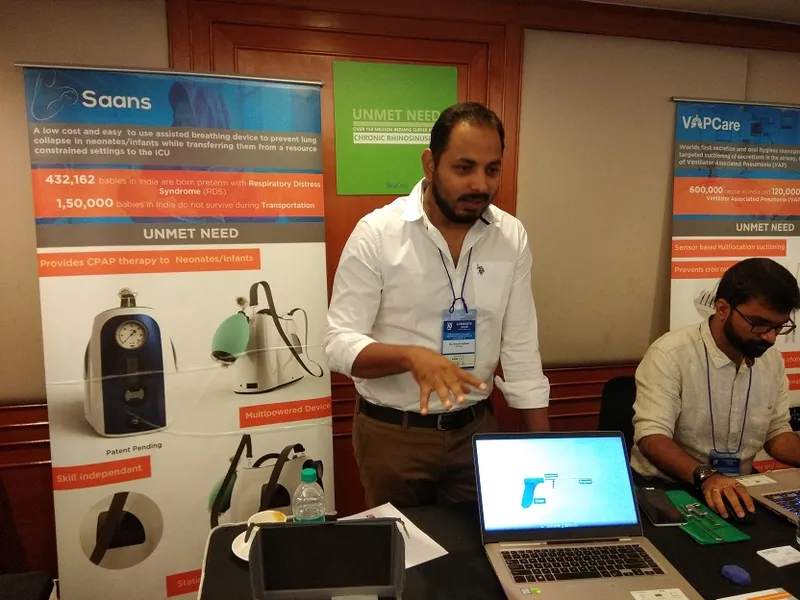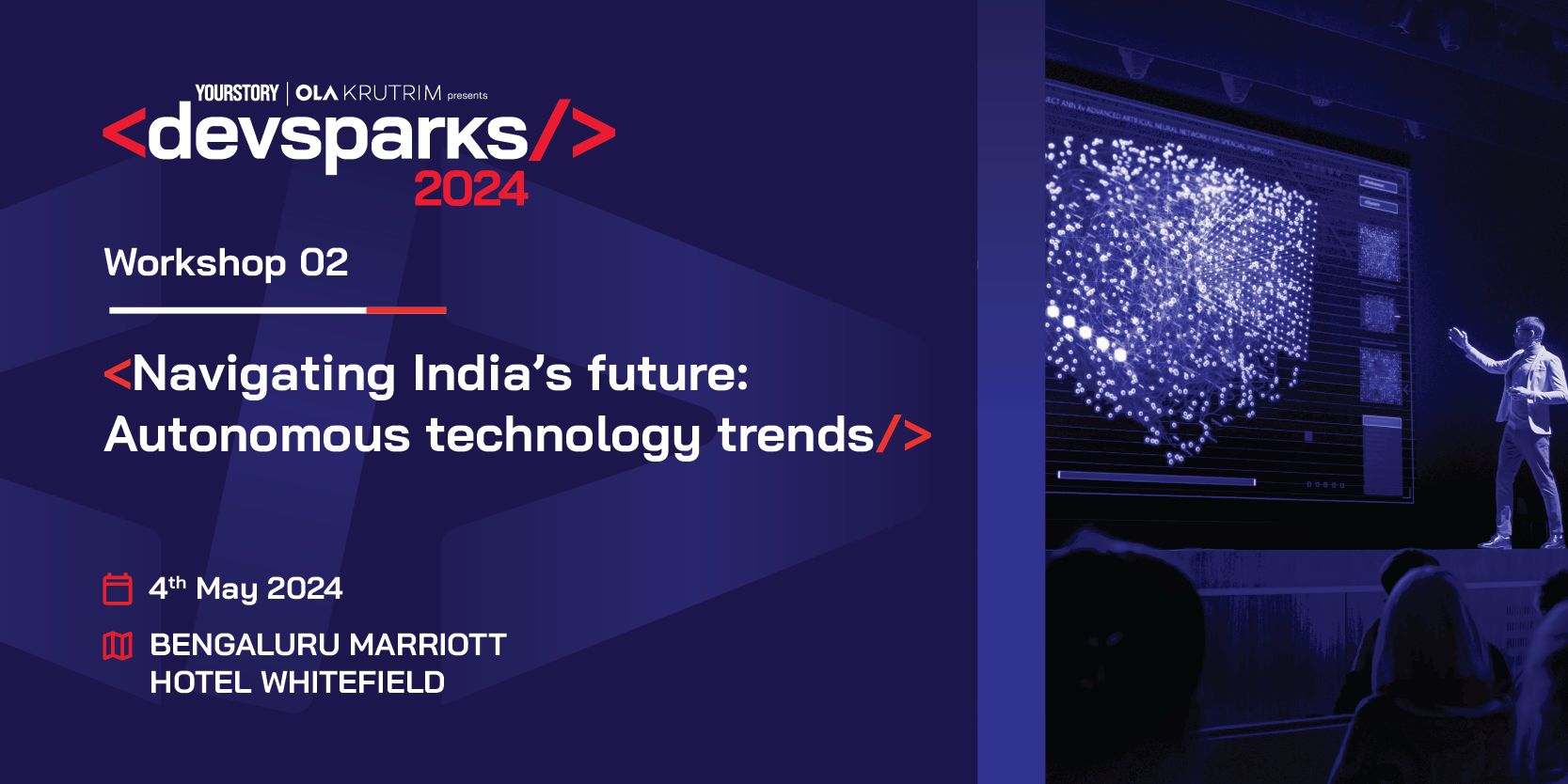‘If data is the new oil, location intelligence is rocket fuel’ – insights from Mobile India 2018
The tenth edition of the annual Mobile India conference, for which YourStory was the media partner, wrapped up recently in Bengaluru with a wide range of insights on mobile trends and opportunities in India.
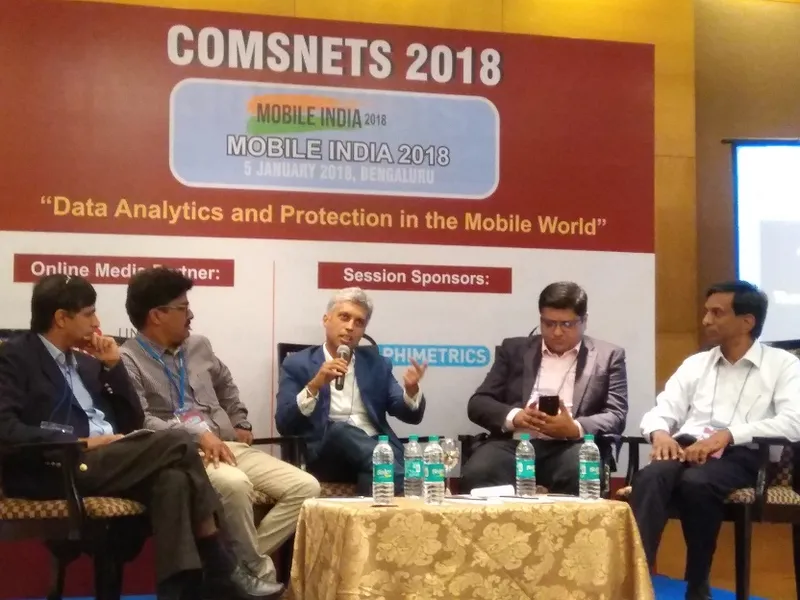
Chaired by professors V Sridhar and TK Srikanth of IIIT Bangalore, the Mobile India 2018 conference was themed ‘Data Analytics and Protection in the Mobile World.’
See YourStory’s coverage of the five earlier editions of this conference: 2017, 2016, 2015, 2014 and 2013, as well as highlights from MobileSparks 2017, 2016, 2015, 2014, and 2013).
Featured speakers were from Cisco, Qualcomm, Intel, Samsung, ICANN, Mojo Networks, Phimetrics, Infosys, TCS, and other firms. Panels and keynotes covered data privacy, mobile authentication, user privacy and enterprise digitisation.
There were a number of poster sessions at the ComsNets conference on emerging applications of networks, presented by Penn State, University of Tokyo, Vellore Institute of Technology, IIT Bombay, IIT Madras, IIT Hyderabad, IIT Guwahati, IIT Indore, IIT (BHU), RV College of Engineering, University of Hyderabad, NIT Rourkela, NIT Goa, and College of Engineering, Pune.
Topics covered in these poster sessions included prediction models, optical networks, fault detection, social media recommendation systems, accelerometer sensors, cyber-physical systems, spam detection, wireless recharging, green energy, and IoT security.
Mobile data boom
India’s mobile boom has led to a quantum leap in the quantity and value of data generated from consumer interactions. According to the Nokia India Mobile Broadband Index 2017, the total data payload in Indian telecom networks grew 60 percent in 2017 to reach 165 peta bytes, driven by developments such as 4G deployment.
From voice to apps and video, mobile traffic is increasing at exponential rates, as shown in Cisco’s Visual Mobile Networking Index. Smarter devices, IoT and WiFi are some of the key mobile data drivers, according to Srikanth Narasimhan, Distinguished IT Engineer, Cisco.
The number of mobile users worldwide will increase from 4.9 billion in 2016 to 5.5 billion in 2021, and the percentage of video in mobile traffic in the same period will increase from 60 per cent to 78 per cent, said Srikanth. By 2021, smartphones and phablets will have more than 50 per cent of market share of all mobile devices.
A good example of a startup exploiting these trends is Trapyz, according to Srikanth. It provides pattern analysis of location data for brand insights, and has a catchy tagline: ‘If data is the new oil, then location intelligence is rocket fuel.’
5G networks promise more bandwidth with less latency and greater power efficiency, which will enable more adoption of IoT and wearables. However, a barrier to 5G rollout will be the need by operators to first recoup 4G investments, and other factors like spectrum allocation.
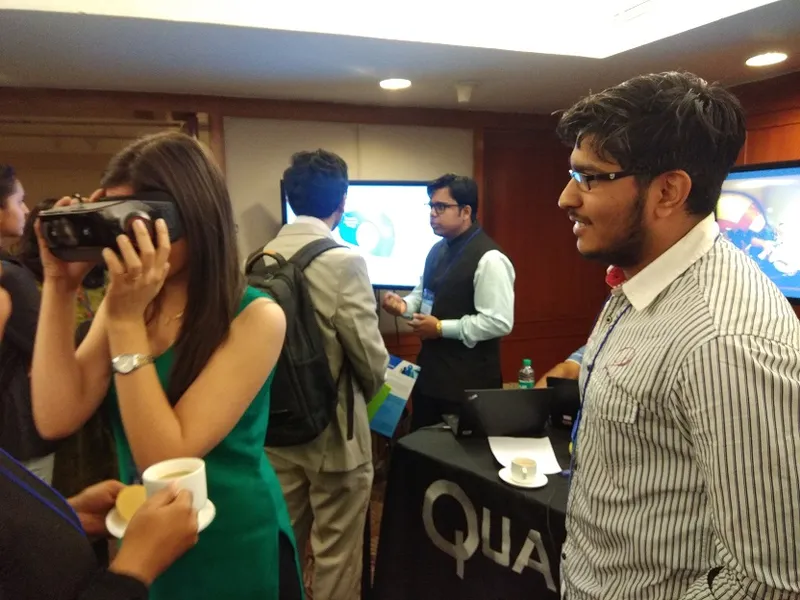
WiFi is also playing an expanding role, added Srikanth. Starting in 2018, fixed WiFi traffic will surpass fixed wired traffic, thanks to the presence of hotspots in cities, public transportation, and events. This will lead to more context-aware applications, live video, VR, and AR.
Massively scaleable secure WiFi networks have already been used at a number of events in India, said Pravin Bhagwat, Co-Founder and CTO, Mojo Networks. “The force of technology is unstoppable,” he observed.
Telecom analytics
Mobile operators have “diamond mines” of valuable data, according to Bhaskar Rao, Head of Software Architects, Nokia Networks. The quest for data was one of the factors which led Verizon to acquire AOL, to make money from mobile and other digital ads. The pipeline of value consists of steps like collect, integrate, explore, transform, learn, and optimise.
Operators are also using Artificial Intelligence (AI) and Machine Learning (ML) to improve efficiency and fault management, and reduce outages. The International Telecommunications Union (ITU) has a study group on ML in 5G systems for standards, reliability, security, and data protection.
Telecom analytics can improve subscriber interaction and even influence transaction behaviour, according to Amitava Das, Head, Telecom Business Unit, TCS. Insights gleaned from data can help with segmentation, modelling, prediction, and forecasting. They help in optimisation of networks as well as advertising.
Other trends to watch are the rise of embedded SIMs, according to Kartik Raja, Co-Founder, Phimetrics. They enable seamless switching, in milliseconds, between operators as per subscriber choice or app needs – such as cheapest or fastest network.
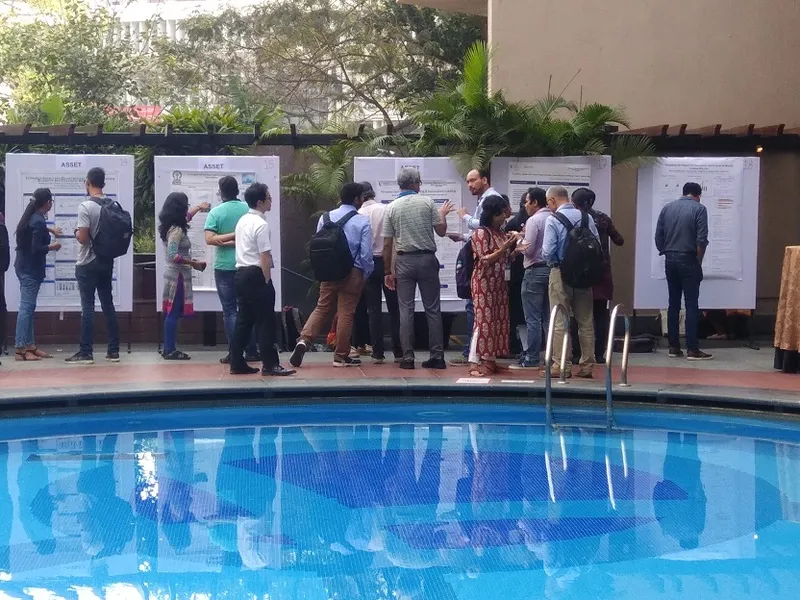
Authentication and security
Mobile broadband usage, currently at about 1 GB per subscriber per month, is expected to rise further, according to reports from Nokia. Analytics based on such data opens the door to new efficiencies and innovation – but also raises questions about privacy, security and protection.
Mobile users should beware of malicious apps which can act as “wrappers” around other apps, cautioned Biswajit Dash, Senior Product Manager, Samsung Pay. The company has a hardware-rooted security environment called Knox. International momentum has been building for the creation of such a Trusted Execution Environment (TEE).
The World Wide Web Consortium (W3C) has launched a web authentication effort for platform-enabled authentication in browsers. Risks have arisen through methods like latex samples of fingerprints and recorded face images from social media, cautioned Giridhar Mandyam, Chief Security Architect, IoT and Automotive, Qualcomm.
“The impact of IOT is often overlooked when it comes to security and privacy. Both are inherently linked as people often don’t realise it enables piecing together data that can be used to breach individual privacy or even create personal or public safety threats,” cautioned Joginder Yadav, General Counsel and Legal Director, Cisco India and SAARC. He cited the Mirai DDOS attack from 2016 as a good example of how hackers were able to cripple the global internet using IoT data streams.
As for wearables and other connected consumer products, many consumers may be surrendering their privacy without realising it. “The truth is we are mostly unaware of what data is being collected and how it is being used. Security can no longer be an afterthought when it comes to IoT, and organisations need to employ security and privacy into the design process of IoT devices and data flows from the earliest stage,” Joginder recommends.
The need of the hour: education
While much discussion on privacy and security tends to focus on technology features, there should also be efforts to educate citizens about these complex topics. At times, even engineers and policymakers do not clearly understand such issues, cautioned Vinay Sreenivas, lawyer at the Alternative Law Forum.
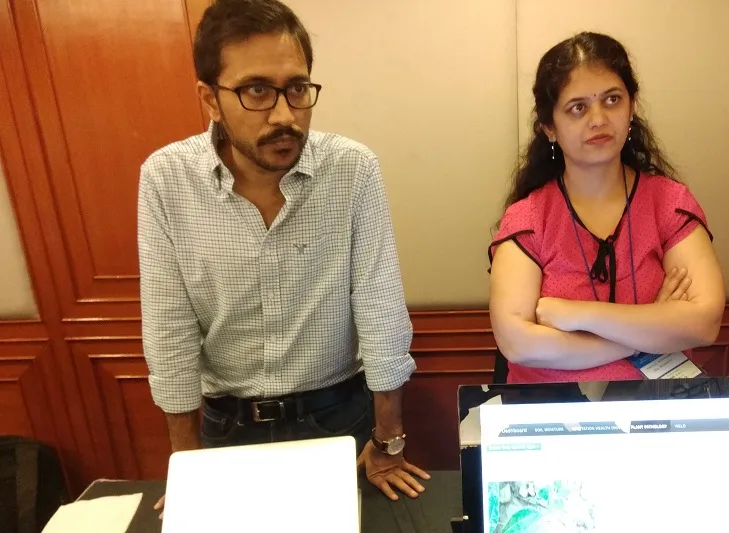
Vinay, a former engineer, is working on technology issues surrounding the informal sector, urban poor, and FOSS (Free and Open Source Software) in government. There is much excitement about digital technology, but many illiterate Indians (and even literates) are unaware of their functioning and broader implications.
There have been catchy photographs of digital payment platforms being used by fruit vendors, but some of these placards have actually been placed by employees of these platforms just to meet targets, observed Vinay.
One has to acknowledge that there is a need for human intervention even with smart technologies, he cautioned, pointing to the presence of immigration staff at automatic e-passport counters.
“What is the difference between identity, authentication and authorisation?” Vinay challenged the audience to answer. Some citizens also have fear of being tracked, and there is ignorance about the meaning of consent. Different identification cards also have a range of connotations and benefits, such as Aadhar, BBMP ID cards and ration cards.
Fortunately, India's Supreme Court has ruled that privacy is a fundamental right for citizens, in a wide-ranging decision covering spatial control, decisional autonomy, and informational control. India, however, needs a comprehensive data privacy law.
An external audit of Aadhar could also help verify its level of security and trust, Vinay added. A number of online resources have emerged to discuss such issues, such as Karana.
In sum, the march of technology has come along with a number of unintended consequences regarding privacy and security. “In its early days, the Internet as a network of networks assumed that most actors were not bad, but data security and privacy are now top of mind issues,” observed Samiran Gupta, Head, ICANN India.
